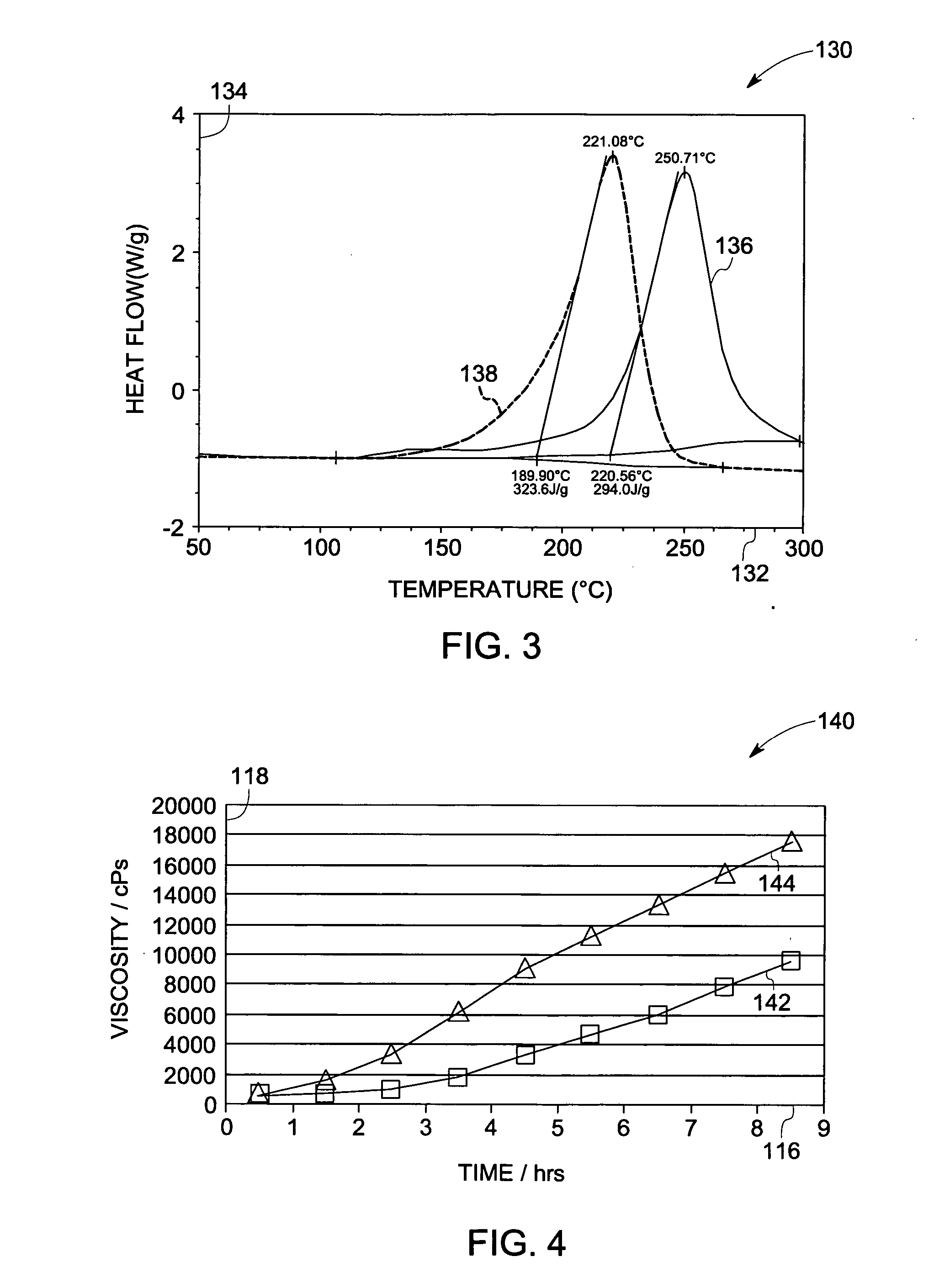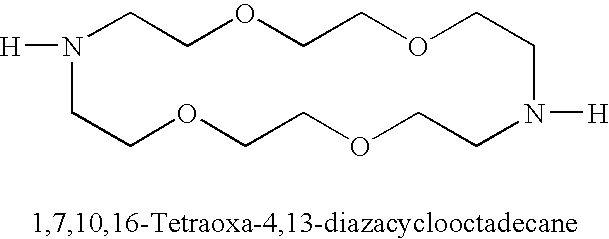Cure catalyst, composition, electronic device and associated method
a technology of electronic devices and catalysts, applied in the direction of physical/chemical process catalysts, organic compounds/hydrides/coordination complexes catalysts, semiconductor/solid-state device details, etc., can solve the problems of inability to produce catalytic materials for use with lead-free solders, and inability to meet the requirements of electrical yield
- Summary
- Abstract
- Description
- Claims
- Application Information
AI Technical Summary
Problems solved by technology
Method used
Image
Examples
example 1
Preparation of a Catalyst
[0050] A round bottom 100 milliliters (ml) flask is charged with 5 grams (g) of tris(pentafluorophenyl)borane and 15 ml of anhydrous toluene to form a suspension. The resultant suspension is stirred for 5 minutes at room temperature (25 degrees Celsius) to form a reaction mixture. Subsequently, 0.81 g of n-methylimidazole in 5 ml of anhydrous toluene is added drop-wise to the reaction mixture. The reaction mixture is transparent after the complete addition of n-methylimidazole. The reaction mixture is stirred at room temperature for an additional hour. Formation of white solids is observed after about 5 minutes of stirring. Subsequently, 30 ml of hexane is added to the reaction mixture and the flask is left in the refrigerator overnight. The next day, the white solid is filtered and dried under vacuum to yield 4.33 g of a product complex. The structure of the complex is confirmed by 1H, 13C and 19F NMR.
example 2
Preparation of a Curable Composition
[0051] A first resin (RSL-1739) and a second resin (EXA-4700), both epoxy-based, are blended together at room temperature with 4-methyl-hexahydrophthalic anhydride (MHH A), glycerol and 5,5′-(1,1,3,3,5,-hexamethyl-1,5-trisiloxane diyl)bis[hexahydro-4,7-methanoisobenzofuran-1,3-dione] (TriSNBA) to form a mixture. The resulting mixture is blended for 30 minutes at room temperature. A catalyst (POLYCAT SA-1 or a catalyst according to an embodiment of the invention) and optional additives as set forth in the Tables below are added to the mixture to produce a formulation. The formulation is mixed at room temperature for approximately 30 minutes and is degassed at room temperature for at least 30 minutes to form a curable composition. The resultant curable compositions are stored at minus 40 degrees Celsius.
[0052] Heat of reaction, onset of cure, cure peak temperature and glass transition temperature (Tg) are determined by non-isothermal DSC experimen...
PUM
| Property | Measurement | Unit |
|---|---|---|
| Temperature | aaaaa | aaaaa |
| Percent by mass | aaaaa | aaaaa |
| Percent by mass | aaaaa | aaaaa |
Abstract
Description
Claims
Application Information
 Login to View More
Login to View More - R&D
- Intellectual Property
- Life Sciences
- Materials
- Tech Scout
- Unparalleled Data Quality
- Higher Quality Content
- 60% Fewer Hallucinations
Browse by: Latest US Patents, China's latest patents, Technical Efficacy Thesaurus, Application Domain, Technology Topic, Popular Technical Reports.
© 2025 PatSnap. All rights reserved.Legal|Privacy policy|Modern Slavery Act Transparency Statement|Sitemap|About US| Contact US: help@patsnap.com



